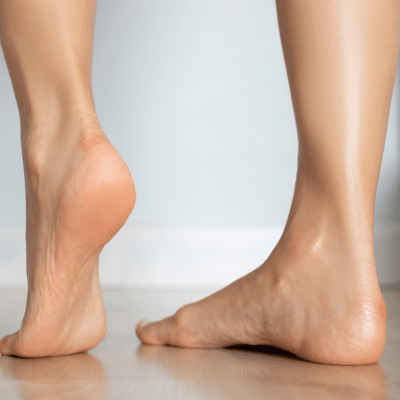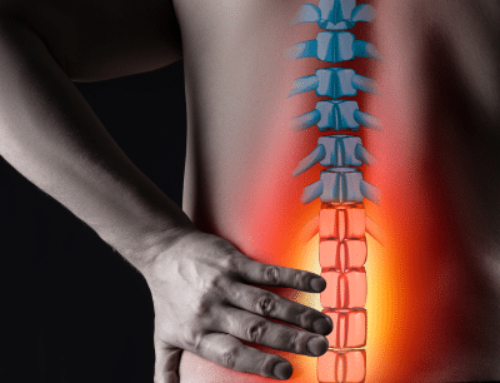
Plantar Fasciitis
Causes: Plantar fasciitis occurs when the thick band of tissue (the plantar fascia) that connects the heel bone to the toes becomes inflamed or irritated. This condition is often linked to excessive strain on the plantar fascia, commonly due to overuse, improper footwear, or biomechanical issues like flat feet or high arches.
Symptoms: The hallmark symptom of plantar fasciitis is heel pain, particularly with the first steps in the morning or after periods of rest. The pain may also worsen after prolonged standing or physical activity.
Treatment Options: Treatment for plantar fasciitis typically involves a combination of rest, ice therapy, stretching exercises and wearing supportive footwear or orthotic inserts. In severe cases, corticosteroid injections or physical therapy may be recommended to alleviate pain and inflammation.
Bunions
Causes: Bunions are bony protrusions that develop at the base of the big toe, often resulting from a combination of genetic factors, improper footwear (such as tight or narrow shoes) and biomechanical issues like flat feet or abnormal foot structure.
Symptoms: The most noticeable symptom of a bunion is a visible bump at the base of the big toe. Other symptoms may include pain, swelling, redness and restricted movement of the affected joint.
Treatment Options: Conservative treatments for bunions focus on relieving symptoms and preventing further progression. This may include wearing wider or more supportive footwear, using padding or orthotic devices to redistribute pressure and taking over-the-counter pain medications. In cases of severe pain or deformity, surgical correction may be necessary to realign the affected joint.
Ingrown Toenails
Causes: Ingrown toenails occur when the edge of the toenail grows into the surrounding skin, leading to pain, inflammation and potential infection. Contributing factors may include improper nail trimming, tight footwear, injury, or genetic predisposition.
Symptoms: Symptoms of an ingrown toenail include pain, tenderness, redness and swelling around the affected nail. In some cases, pus or drainage may be present, indicating infection.
Treatment Options: Mild cases of ingrown toenails may be managed at home by soaking the foot in warm water, gently lifting the nail edge and keeping the area clean and dry. However, if infection or persistent pain occurs, professional treatment by a podiatrist may be necessary. This may involve partial nail removal (partial avulsion) or, in severe cases, complete nail removal (total avulsion) to alleviate symptoms and prevent recurrence.
In Conclusion: Walking Towards a Brighter, Pain-Free Future
Understanding the causes, symptoms and treatment options for common foot problems like plantar fasciitis, bunions and ingrown toenails is essential for maintaining foot health and overall well-being. With proper care and treatment, many foot conditions can be effectively managed or resolved, allowing you to step forward with confidence and comfort.
Contact Hampton Roads Orthopaedics & Sports Medicine to Request an Appointment
If you’re experiencing persistent foot pain or discomfort, don’t hesitate to seek professional medical advice. At Hampton Roads Orthopaedics & Sports Medicine (HROSM), our experienced podiatrists are here to help you find relief and regain mobility. Contact us today to request an appointment.






